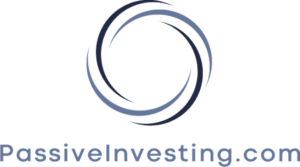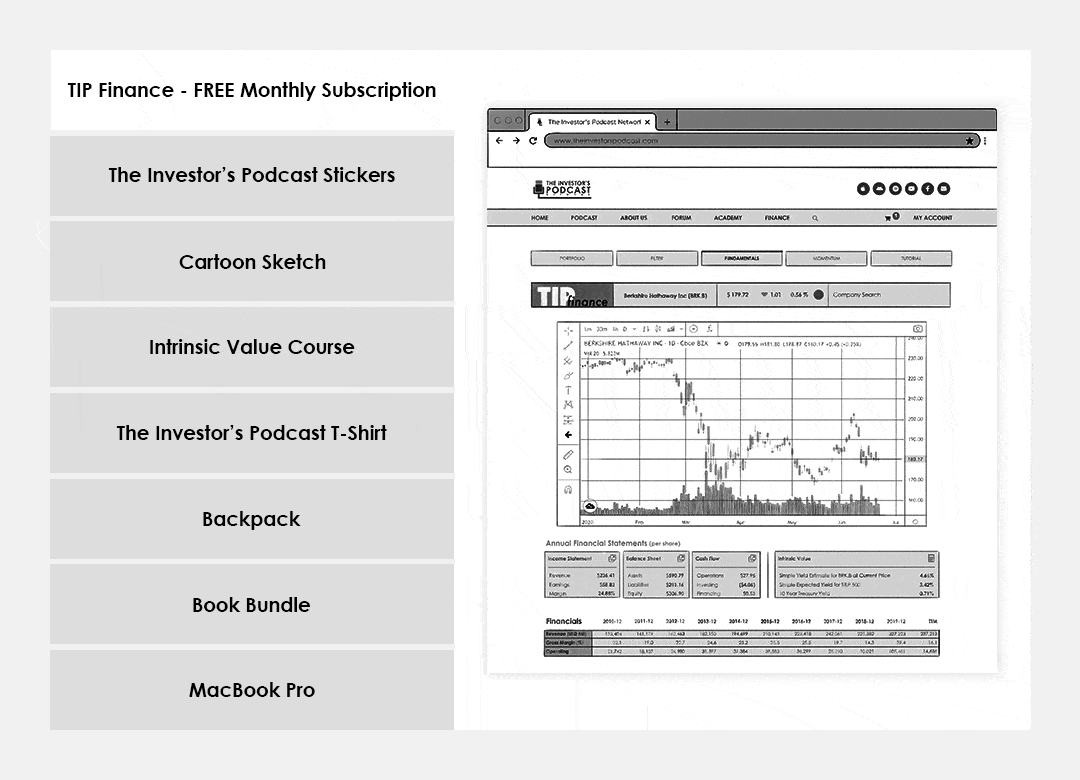Apex Spawners
23 September 2022

Hi, The Investor’s Podcast Network Community!
Welcome back to We Study Markets!
It was another sea of red today as the global markets got bludgeoned from multiple sides.
The symbolic Dow Jones Industrial Average fell to its lowest level of the year, the dollar surged, and oil prices collapsed.
🇬🇧 The U.K.’s plan to lift its economy via the most sweeping tax cuts since 1972, along with energy cost subsidies for Britons, has many investors fearful about the fiscal trajectory it places the country on.
The package will cost 1.4% of the United Kingdom’s GDP.
Long-term borrowing costs in the U.K. surged in one of the biggest weekly increases on record, while the pound slid further against the dollar. Some consider the economic package to be a “radical economic gamble.”
Wall Street’s “fear gauge” jumped to a three-month high as the CBOE Volatility Index (VIX) topped 30. There are still eight days until October, but things are getting spooky fast for investors 👻
Here’s the market rundown:

*All prices as of market close at 4pm EST
Today, we’ll discuss the bond market sell-off, China’s burgeoning wealth, immigration as a possible solution to high inflation, and a pivot from value investing.
All this, and more, in just 5 minutes to read.
Read on 📖
Understand the financial markets
in just a few minutes.
Get the daily email that makes understanding the financial markets
easy and enjoyable, for free.
IN THE NEWS
🤢 Bond Losses At Worst Since 1949, Sentiment Plummets (Reuters)
Explained:
- According to a research note from Bank of America today, global government bond losses are on pace for their worst year since 1949, while investor sentiment has reached lows not seen since the Great Financial Crisis.
- Sell-offs in bonds, and a crowded trade betting on the U.S. dollar, threaten liquidations and bankruptcies broadly, as the cost of international borrowing soars.
What to know:
- The benchmark U.S.10-year Treasury yield has recently hit its highest level since 2011 (bond prices and yields have an inverse relationship).
- Just through Wednesday of this week alone, bond funds saw outflows of $6.9 billion, while $30 billion was piled into cash. Evidently, investors are seeking shelter.
- Although cash will lose purchasing power to inflation, in some investors’ minds, at least it’s not losing value as quickly as most bonds and stocks are.
🇨🇳 China’s Median Net Worth Surpasses Europe (Axios)
Explained:
- For the first time, the median adult in China is now richer than the median adult in Europe.
- Over the last 20 years, China’s remarkable economic transformation has created tremendous wealth, while the failure of many Eastern European companies to improve living standards has held the rest of Europe back.
- Median Chinese wealth comes in at $26,752, which is about a third of the figure for the U.S. ($93,271) but more than four times greater than Russia’s at $6,379.
What to know:
- The wealth range in Europe is uneven, to say the least. While Belgium boasts a median wealth for its adult citizens of around $256,000, Bulgaria and Romania yield a meager $4,486 and $20,389, respectively.
- Globally, mean wealth in 2021 grew by almost 5%, though median wealth grew at a significantly faster 8.1% rate, indicating that inequality is going down, not up (broadly speaking).
👫 Could Immigration Be The Answer To High Inflation (Bloomberg)
Explained:
- The famous investor, Bill Ackman of Pershing Square Capital, argued recently that increasing immigration may be a more effective tool for cooling inflation than rate hikes that “destroy demand.”
- The thinking is that since inflation is driven by an imbalance between supply and demand, rather than focusing on the demand part of the equation through manufacturing a recession and reducing peoples’ ability to spend money (higher interest rates), we ought to boost our supply-side capabilities.
What to know:
- Ackman believes that a greater flow of new immigrants would solve the labor shortage while restraining wage growth. This could help the Fed avoid its dreaded “wage-price spiral” (where higher wages lead to higher prices which necessitate higher wages ad infinitum).
- Of course, not all immigrants are low-wage workers. By attracting top talent from around the world, notably many of the engineers and IT workers looking to flee Russia, the U.S. could also boost its productivity, thus enabling a more robust supply-side response to inflationary forces.
BROUGHT TO YOU BY
You follow superinvestors like Buffett, Munger, Pabrai, and Greenblatt because they have a proven track record of outstanding investment returns. When investing passively in real estate, you’re looking for those types of investors to lead your deals. Learn what to look out for with the free 7 Red Flags for Passive Real Estate Investing guide.
DIVE DEEPER: APEX SPAWNERS
An apex spawner sounds like something you’d learn about on The Discovery Channel. Instead, it’s an investing idea from Mohnish Pabrai that could generate your next home run.
What to know
Pabrai is one of the most famous value investors of our time. He is most known for his friendship with Charlie Munger and Warren Buffett, but also for the returns Pabrai Funds generated between 1999 and 2018.
If you had invested $100,000 with him when he started the fund, you would have $1.8 million by 2018, representing a return of 15.5% per year compared to 7.5% for the S&P 500 for the same period.
Patrick — I was first introduced to Pabrai after reading Chapter 1 of William Green’s outstanding book, Richer, Wiser, Happier, and have been intrigued with him ever since.
I read Pabrai’s book, The Dhandho Investor, to learn more about his investing philosophy. The book was excellent, and his approach was what you would expect from a Warren Buffett acolyte.
His investing goals were to buy $1 worth of assets for much less than they were currently selling for in the market. He called his philosophy, “Heads, I win. Tails, I don’t lose too much.”
The pivot
However, his investing results went south from 2018 onward as several of his investments did not work out, and his returns since inception fell to 671%, representing a return of around 10% per year.
These results made Pabrai rethink his investing strategy. He began a move away from strictly value investing due to the influence of Nick Sleep of Nomad Investment Partnership. You can read more about Sleep’s philosophies here.
Ultimately, Pabrai switched from value investing and searching for stocks with low PE ratios selling below book value to investing in spawners. Unlike value investing, where you need to find new bargains constantly, once you find a spawner, you stick with it for the long term.
What’s a spawner?
A “spawner” is a company with the necessary DNA to incubate new business ventures that have the potential to become massive growth engines.
For this to happen, a company should expect many failures and take them in stride. The key is to start small and scale only when it makes sense. Jeff Bezos’ letter to his shareholders in 2017 expresses the idea well: “Staying in Day 1 requires you to experiment patiently, accept failures, plant seeds, protect saplings, and double down when you see customer delight.”
One big advantage of spawners is that they use pre-tax earnings to grow. Aggressively investing earnings into growing the business allows the company to grow its intrinsic value without paying taxes.
For example, Amazon hardly reports any earnings and is infamous for barely paying any taxes because of how aggressively they reinvest back into businesses they are spawning. Otherwise, approximately 30% of their earnings would go to the government. Instead, they are spawning new profit centers that annually compound their growth.

Different types of Spawners
- Adjacent Spawns — This group of companies grows by venturing into adjacent markets with related products. A good example of an adjacent spawner is Starbucks, which grew from coffee shops to Frappuccino bottles, coffee machines, Starbucks Reserve, and Starbucks Alcohol.
- Embryonic Spawns — These types of companies acquire new businesses and nurture them into much larger businesses. Facebook, for example, has acquired Instagram, Whatsapp, and Oculus VR and has nurtured them into much larger companies.
- Cloner Spawns — These companies don’t innovate. Instead, they simply copy other successful businesses. Microsoft is a primary example of a cloner. Nothing wrong with being a shameless cloner. It’s a great strategy.
- Non-adjacent Spawns — These companies create or buy businesses in completely unrelated areas. The electric car company BYD is an example, as they are also involved in face mask manufacturing.
- Apex Spawns — These are the best spawners, and they utilize all of the tactics listed above. Most 10 to 100-baggers are in this category. Some examples include Amazon, Alphabet, Alibaba, and Berkshire Hathaway.
Most businesses are non-spawners, including many exceptional ones, which tend to have a singular focus on their core business and view ancillary businesses as distractions. Excess cash is generally used for share buybacks, dividends, or capital expenditures on the core business.
Pabrai’s rules for investing in spawners
There were over 3,700 IPOs in the U.S. in the last 20 years, and only nine of those businesses grew to exceed $1 billion in valuation. Here are some of Pabrai’s rules for finding spawners:
- Assume the upper limit of any business you invest in will not exceed a market cap of $50 billion. For ten-bagger opportunities, buy below a $5 billion market cap. For hundred-baggers, buy below a $500 million market cap.
- Look at the history of the business. Does it have strong spawning DNA? Does it have an outstanding capital allocator at the helm? Pabrai says there is no need to make heroic assumptions. The future should be obvious from past behavior and the success or failures a company has had.
- Pabrai’s idea is to create a portfolio of five to ten spawners where the unlimited upside of those that succeed will make up for the inevitable flops.
- Pabrai says you should be happy if you find one outstanding spawner yearly. Once you do, the key is to set it and forget it.
- Ignore temporary headwinds. All businesses have good and bad periods, but if you are confident in the company’s spawning DNA, you must ignore all temporary negative news.
- Set it and forget it doesn’t mean you never sell. Pabrai recommends selling only once the structural trends are over.

The bottomline:
Finding a true spawner can significantly boost our investment returns, but there are risks associated with them.
There are very few truly great spawners, yet if a dyed-in-the-wool value investor such as Mohnish Pabrai has pivoted to focusing on them for his portfolio, maybe it is reason enough to consider the strategy for ourselves.
Readers — What do you think of Pabrai’s pivot away from traditional value investing to focusing on spawners?
Is it a strategy you would consider for your own portfolio?
You can listen to TIP’s most recent interview with Pabrai here.

SEE YOU NEXT TIME!

That’s it for today on We Study Markets!
See you later!
If you enjoyed the newsletter, keep an eye on your inbox for them on weekdays around 6pm EST, and if you have any feedback or topics you’d like us to discuss, simply respond to this email.








